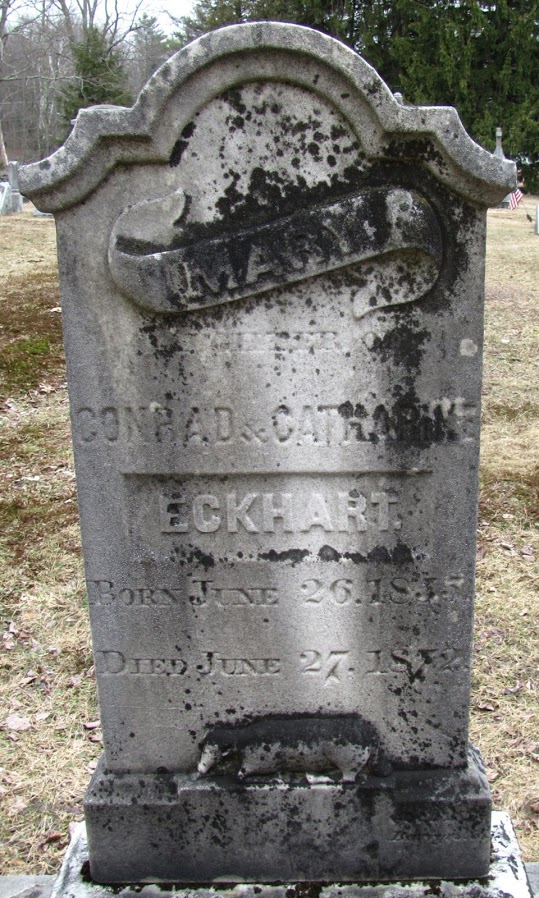| Delaware Cemetery, Dingmans Township, Pike Co PA, 1821 |
This anonymous artisan's work is found throughout the churchyards and burying grounds of the Minisink Valley from 1802 - 1838. To date we have discovered no signature to identify him but the stone cutter's use of a distinctive ornament of branching leaves and similar lettering elements can be found on tombstones in all three states.
Richard Veit in New Jersey Cemeteries and Tombstones suggests researching estate records to aid in identifying stone cutters, so a bit more research is in order. Quite possibly this is the work of two stone cutters, perhaps father & son or master & apprentice.
| Laurel Grove Cemetery, Port Jervis NY, 1820 |
The 1820 example for Benjamin Carpenter, at left, and that of Jane Van Etten, 1837, are located at Laurel Grove Cemetery.
Correction: Benjamin Carpenter was re-interred from the Carpenter farm burial ground.
| Westcolang, Pike Co. PA 1836 |
The earliest marker located thus far is that of Nathan Whitlock, 1802, at the Magakamack Churchyard, Port Jervis, Orange Co NY. Additional markers bearing the ornament in this old burying ground include that of Joseph Van Noy, 1833, John Nearpass, 1834, Lydia Van Fleet, 1835.
It is possible that the Whitlock marker was carved some years later than 1802. Viet cautions that wooden markers decayed and were often replaced by family members some years after the burial.
| Damascus, Wayne Co PA, 1837 |
Two examples can be found in the Damascus First Baptist churchyard in Wayne County, PA - that of Elijah Pullis, 1837, at left, and Love Ross, 1833.
The John Ryerson marker located at the Cemetery on Bell Farm in Matamoras, Pike Co PA appears to be dated either 1811 or 1841.
| Montague Township, Sussex Co NJ, 1838 |
Perhaps the most accomplished of the tombstones to use this ornament is that of Blandinah, wife of Severyne Westbrook, in the family burial ground off the Old Mine Road in Montague Township.
Whether this stone was ordered & shipped with the lily frame pre-cut or a design element popular at the time and added by the stone cutter remains unknown.
Numerous examples of the lily frame around a central circle exist without the added branching leaves ornament of the "Minisink Stone Cutter" during the 1830s and 1840s throughout the region.










.jpg)